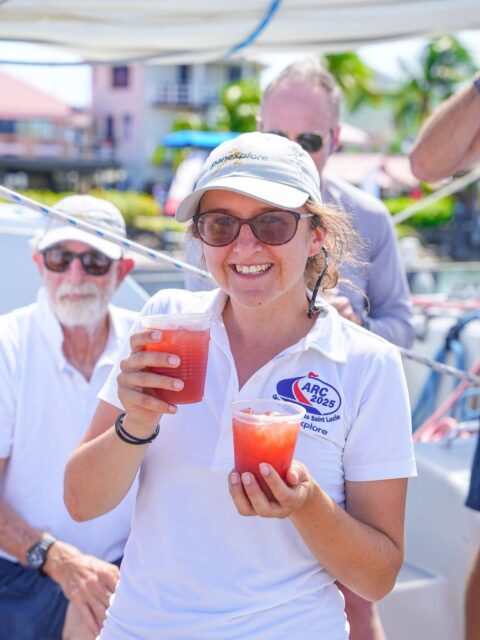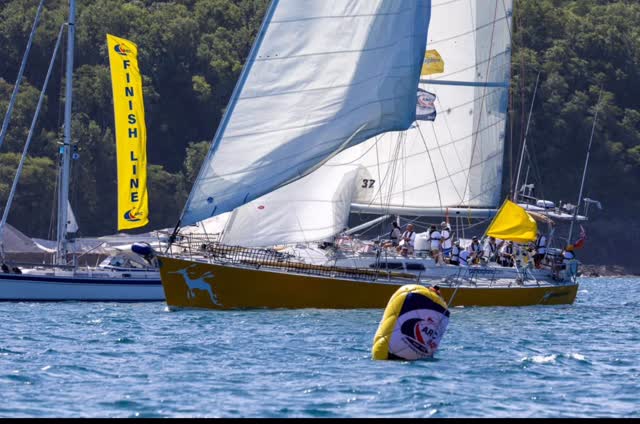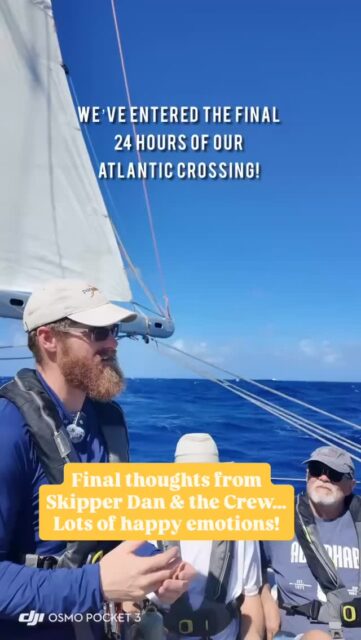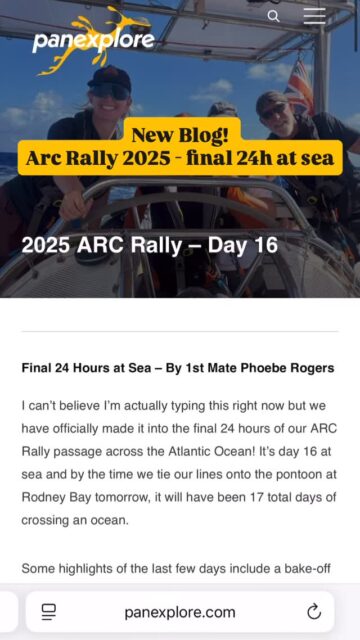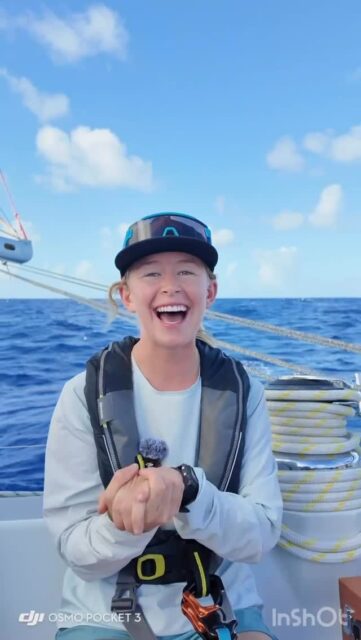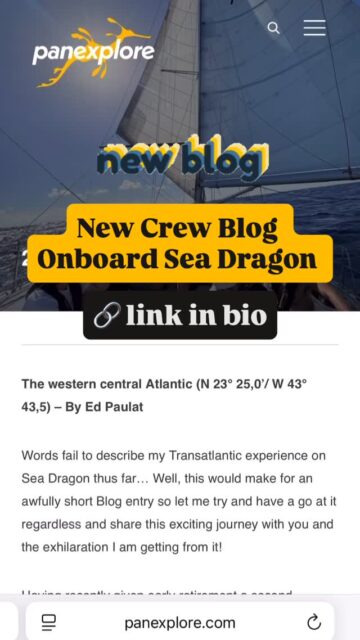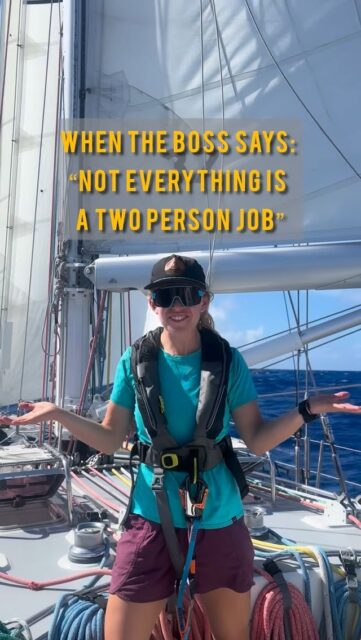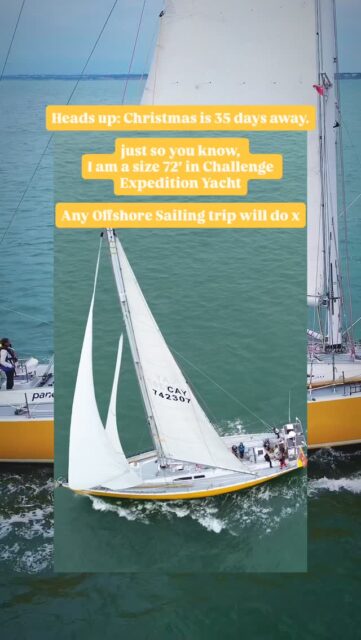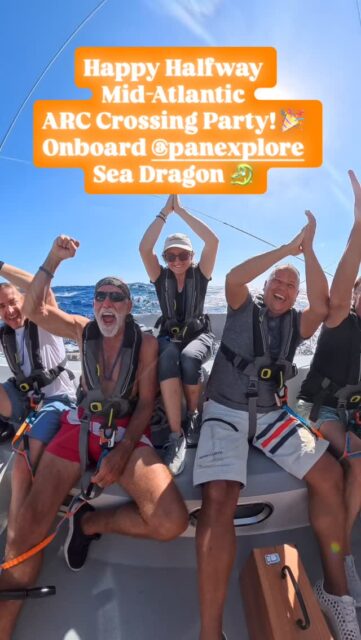Crew on Board: Margaret Peitrak, Shanley McEntee, Eric Loss, Mitch McLean, Kate Gardella, Asta Mail
Blog Written by: Asta Mail
I began my watch this morning at 0800, with Shanley at my side as we climbed out in to the bright morning sunlight. The wind had reappeared overnight, after a glassy evening spent passing through the Canso Canal, separating Cape Breton Island and Nova Scotia. I was happy to feel the wind again, pushing Sea Dragon along at a galloping pace up and over the crests of the 3-4 foot waves. We had perfect sailing conditions- good wind, just enough sun, and a feeling that all was right with the world.
I began to think about the water we were cutting through as I watched it rush by our bow and roll out into ever widening swirls at the surface. We are now sailing our way away from the Atlantic Ocean, the second largest ocean in the world, to enter one of its’ strategic access points, the St. Lawrence Sea Way. The Atlantic, a body of water 76.62 million square kilometers in size, has been Sea Dragon’s home for the last six months, since transiting through the Panama Canal. She is now steered towards fresher waters, and as we enter the St. Lawrence Estuary, we are beginning to get curious about this region, where fresh water flowing from the Great Lakes meets the Sea.
Estuaries are special parts of the ocean, with their own set of unique physical and biological conditions. I’m really interested in the way that the water moving through the St. Lawrence Seaway reaches the salty water of the Atlantic, and how mixing between salty and fresh water occurs. As a part of Pangaea’s summer research, I decided it would be interesting to investigate how the characteristics of the water we sail through changes as we get closer and closer to the mouth of the St. Lawrence River.
Our crew has been lucky enough to be given the perfect tool to study the water’s changing characteristics by a researcher who is joining us this summer on board Sea Dragon. Paul Helm, a Senior Research Scientist from the Ontario Ministry of Environment has been working with us all spring to prepare for our upcoming research in the Great Lakes.
Paul works with a dedicated team of science and field staff on Great Lakes issues with the Ontario Ministry of the Environment. Paul’s areas of expertise include Great Lakes contaminant issues; sources, fate and transport of organic contaminants in the aquatic and urban environments; passive sampling approaches to monitor and track fate of hydrophobic and polar chemicals; and non-targeted analyses of chemicals in environmental matrices.
Paul has conducted vessel-based sampling and research from the Great Lakes to the Arctic. He received his PhD from the University of Toronto in Chemical Engineering & Applied Chemistry. He is a dedicated researcher, and is currently looking to expand his understanding of the Great Lakes, by taking part in our upcoming Freshwater Research and Scientific Communications course, along with Dr. Sherri Mason of SUNY Fredonia University.
Paul’s goal in joining us is to learn the plastic pollution trawling techniques and methodology from Dr. Mason, so that he may contribute to monitor the plastic pollutions levels in Lake Ontario in the future.
Paul and the Ministry of Environment Ontario generously offered to lend us a YSI water quality testing sensor, which we can use to study certain characteristics of the water around us. The YSI sensor is an incredible piece of technology that allows us to quickly and easily measure;
· the pH
· conductivity,
· temperature, and
· dissolved oxygen levels
in the water that we are sailing through.
As we sail, we will also be collecting samples for Paul, and studying;
· Salinity
· Biological Oxygen Demand
· Phosphate levels
· Nitrate Levels, and
· Levels of Organophosphorus Flame Retardants (OPFRs)
Why would we be studying these characteristics, you might ask? Well, freshwater and salt water tend to vary in these particular characteristics. More details about these characteristics and why they are important will be in a future edition of this blog.
Here’s your food for thought for the day, eager scientists-help us develop a hypothesis on how these different characteristics will change as we get nearer to our freshwater source.
· What is the normal pH of seawater? Do you think the ocean’s pH has changed over time, or remained relatively the same?
· Do you think the pH of the water will increase or decrease as we get closer to the St. Lawrence seaway?
· As the two types of water mix, which characteristics do you think will change?
· Do you think the water will show signs of higher or lower biological activity as freshwater mixes into the ocean?
Sampling began today, and we are excited to tell you that it went really well. Throughout the rest of our journey to Quebec City, we will be collecting water samples, and recording the data from our YSI sensor and chemical analyses, so that we can let you know what you discover.
We hope we have given you something to think about, and look forward to sharing our results with you!
Thanks again, Paul and the Ministiry of Environment Ontario for lending us this awesome equipment! We look forward to having you on board!

